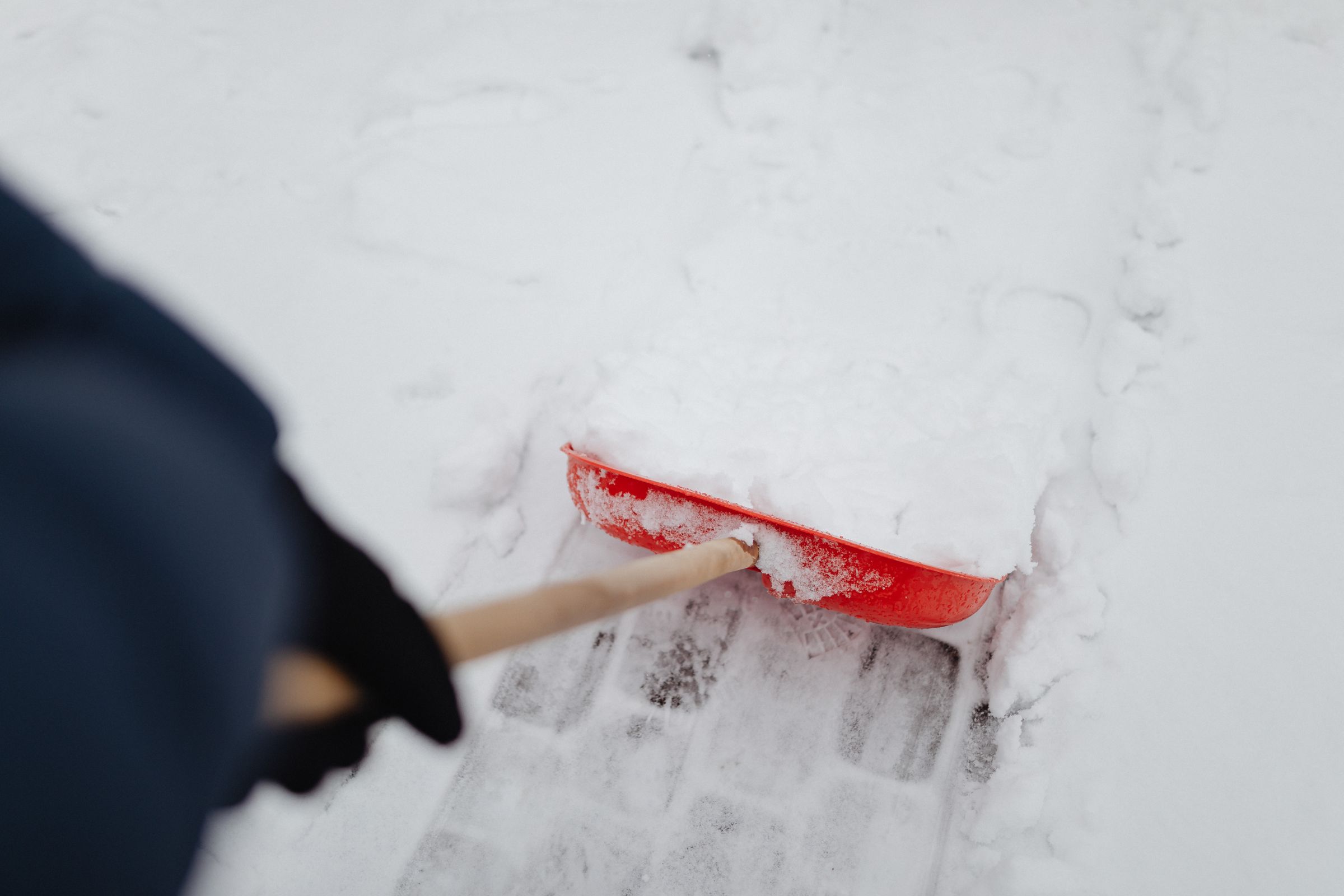Table of Contents
Related Articles
Comprehensive Snow Shoveling Safety Guide: Protecting Workers Through Education & Prevention

Snow removal represents one of winter’s most challenging maintenance tasks, combining physical exertion with cold weather conditions. Understanding the complexities of safe snow removal helps protect workers while ensuring effective facility maintenance throughout the winter season.
Understanding the Full Scope Of Snow Removal Risks
Snow shoveling presents multiple hazards that require careful attention and preparation. The combination of physical exertion and cold weather creates unique challenges that affect worker safety in several ways:
Cardiovascular Considerations
The human body works extraordinarily hard during snow removal, not only to perform the physical task but also to maintain proper body temperature. The combination of increased heart rate from shoveling and artery-constricting cold air creates what medical experts describe as “a perfect storm” for potential heart problems. This risk becomes particularly significant for certain individuals, including those who:
- Smoke or use nicotine products
- Have a history of heart disease
- Live with high blood pressure
- Maintain relatively inactive lifestyles
Physical Strain & Ergonomic Impact
Snow shoveling places significant demands on multiple body systems. The weight of snow, which can reach 15 pounds per cubic foot, combines with repetitive motions to create substantial physical stress. Workers must understand how this affects:
- Back muscles and spinal alignment
- Shoulder joints and supporting muscles
- Arm strength and endurance
- Overall body stability and balance
Environmental Hazards
Winter conditions create additional risks beyond the physical act of shoveling:
- Hidden ice beneath snow layers
- Reflected sun exposure causing unexpected sunburn
- Wind chill effects accelerating heat loss
- Frostbite risk to exposed skin
- Limited visibility around moving vehicles
Essential Preparation Steps
Proper preparation significantly reduces injury risk. Workers should follow these important steps before beginning snow removal:
Hydration & Nutrition
Dehydration poses a serious risk during winter work, often overlooked because cold weather masks thirst signals. Workers should:
- Drink two glasses of water approximately 30 minutes before starting
- Avoid caffeine and nicotine, which stress the cardiovascular system
- Maintain hydration throughout the work period
- Listen to their bodies’ signals for additional water needs
Proper Clothing Selection
Clothing choices significantly impact both safety and comfort during snow removal:
- Layer clothing instead of wearing a single heavy coat
- Start with a moisture-wicking base layer
- Add an insulating middle layer
- Finish with a weather-resistant outer layer
- Be prepared to remove layers as physical activity increases body temperature
Equipment Selection
The right tools make a substantial difference in safety and efficiency:
- Choose shovels with curved handles for better back alignment
- Select plastic blade shovels to reduce weight
- Consider smaller blades for better control of snow loads
- Ensure handle length allows proper posture during use
- Verify all equipment is in good working condition before starting
Safe Working Techniques
Understanding and implementing proper techniques prevents injuries while maintaining efficiency:
Proper Movement Patterns
Workers should maintain proper form throughout the snow removal process:
- Push snow whenever possible instead of lifting
- Keep the shovel close to the body during lifting
- Use leg muscles rather than back muscles for power
- Avoid twisting movements, especially while lifting
- Take small amounts of snow rather than attempting large loads
Pacing & Monitoring
Proper pacing prevents overexertion:
- Take breaks every 5-10 minutes
- Monitor heart rate (should not exceed 85% of maximum)
- Calculate maximum heart rate by subtracting age from 220
- Watch for signs of fatigue or strain
- Stop immediately if experiencing chest pain or unusual discomfort
Cold Weather Protection
Protecting against cold weather effects requires constant attention:
- Cover extremities completely, including fingertips and ears
- Apply sunscreen to prevent reflected snow burn
- Monitor for signs of frostbite, especially on exposed skin
- Consider wind chill effects when planning work periods
- Use appropriate foot gear with ice grips for stability
Risk Reduction Strategies
Recent data shows that weather-related incidents account for significant workplace injuries, with documented claims exceeding $1 million over a five-year period. Organizations can reduce these risks by:
Administrative Controls
- Implementing clear safety protocols
- Providing regular training sessions
- Maintaining proper equipment
- Establishing clear communication channels
- Monitoring weather conditions actively
Alternative Solutions
- Using snow blowers when appropriate
- Engaging professional services for large areas
- Implementing team-based approaches
- Providing mechanical assistance where possible
- Planning ahead for winter weather events
Prioritizing Safety For Effective Snow Removal
Effective snow removal requires balancing efficiency with safety. By understanding and implementing these comprehensive safety measures, organizations can protect their workers while maintaining necessary winter operations. Regular review and updates of these protocols ensure continued effectiveness and worker protection throughout the winter season.
This guide serves as a comprehensive resource for winter maintenance safety. Regular review and implementation of these practices helps ensure safe and efficient operations while protecting worker health and well-being.




